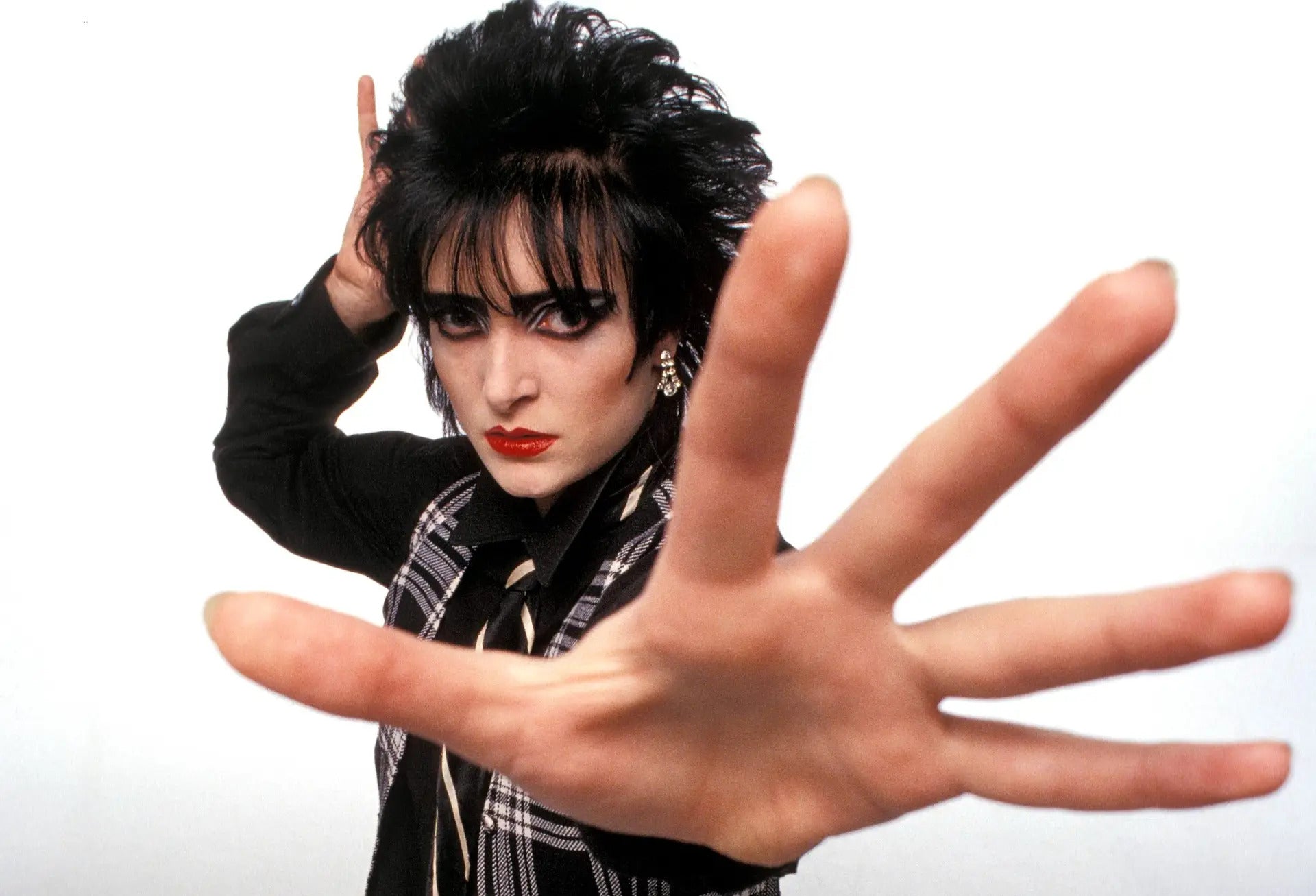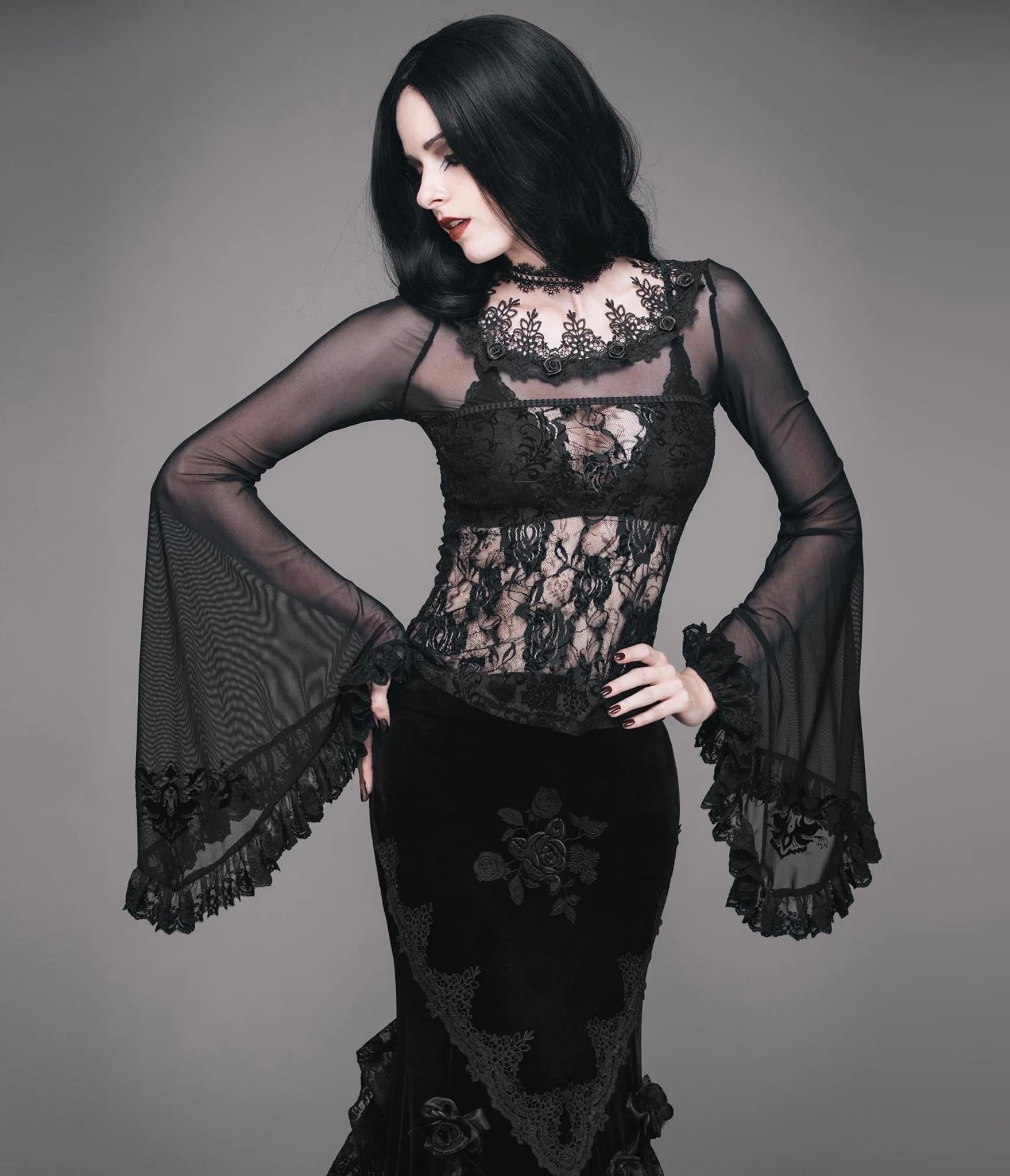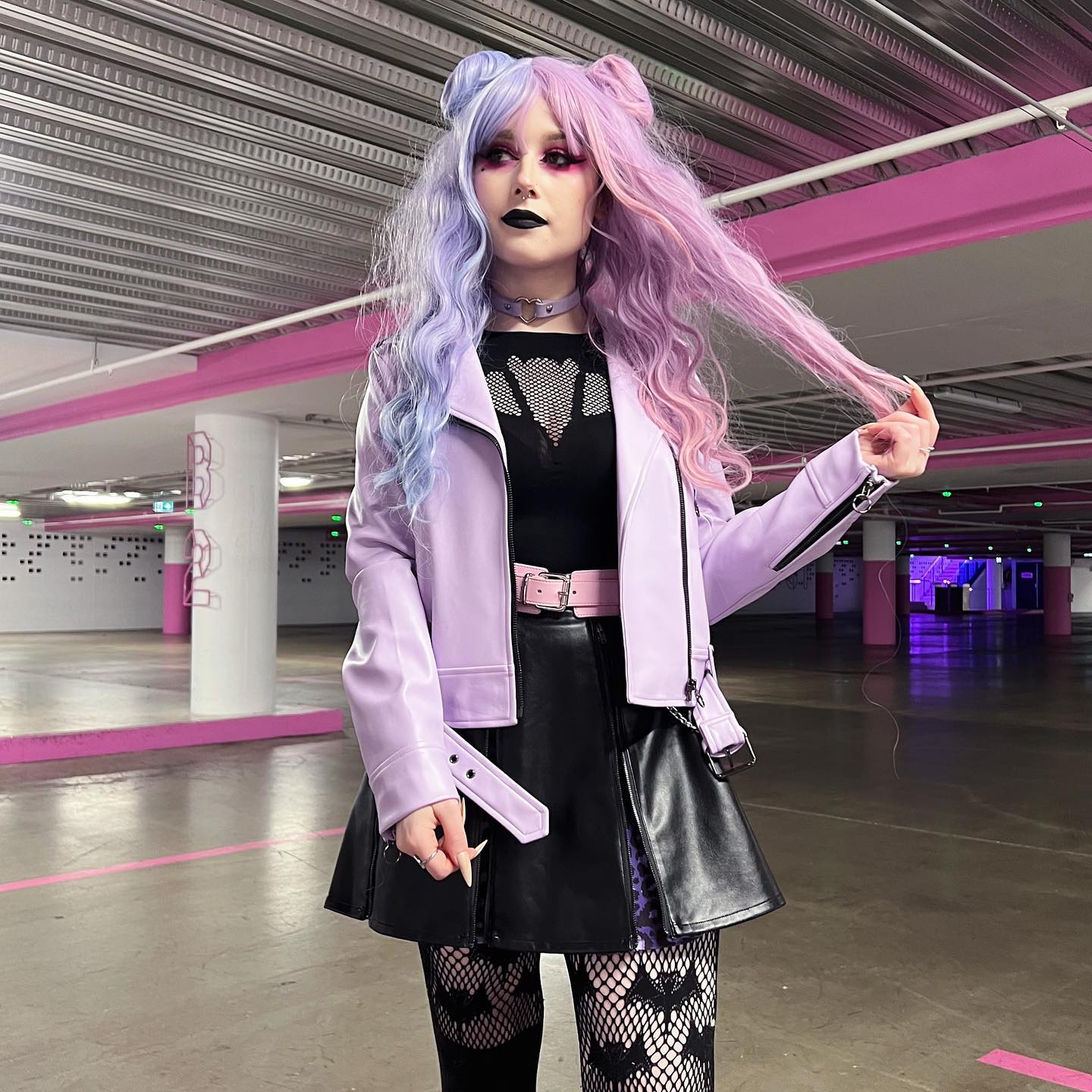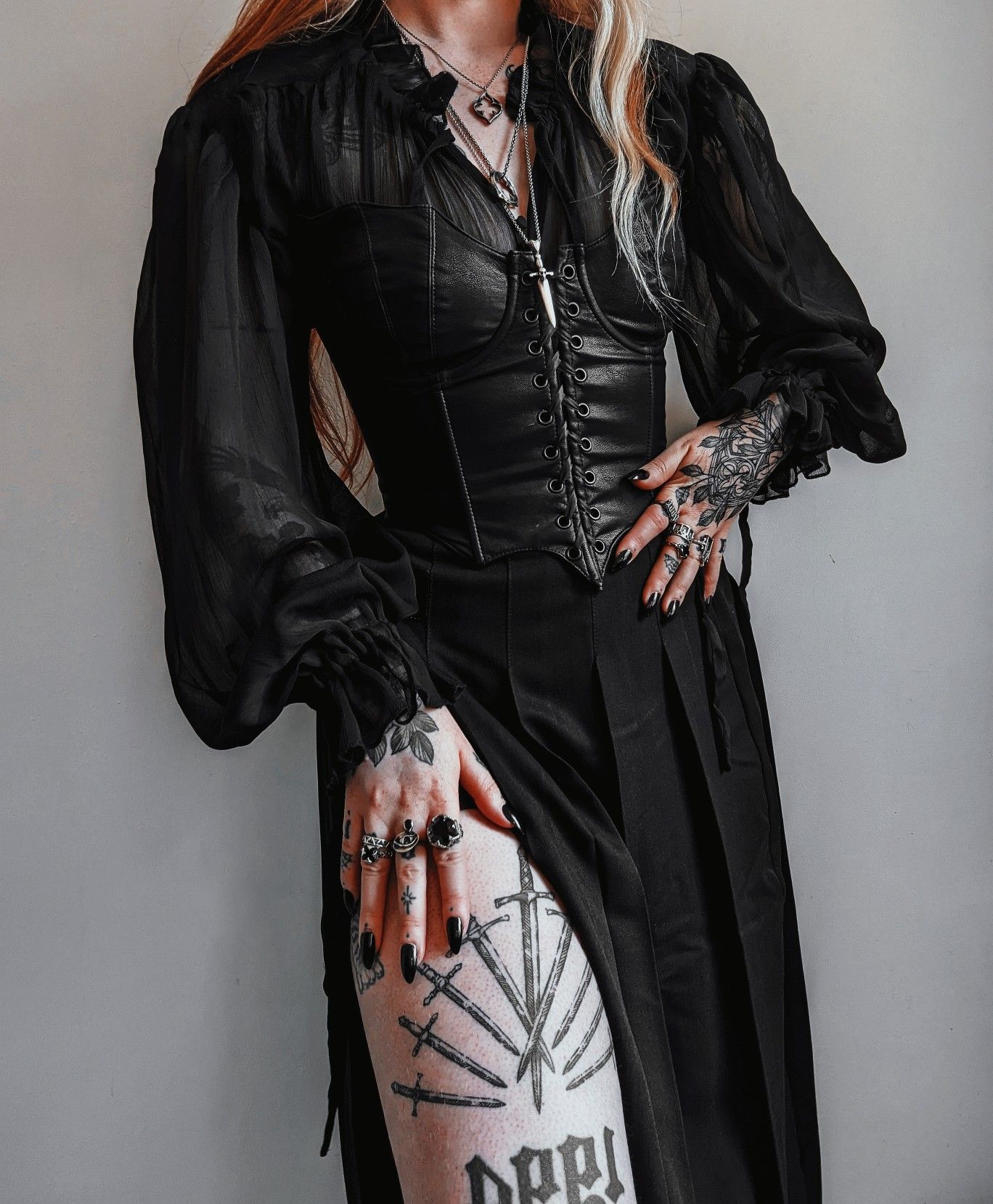Gothic Style Evolution: Decades of Elegance
Gothic fashion, with its origins deeply embedded in the early 1980s post-punk milieu, has unfurled its dark wings to captivate a niche yet passionate audience. This fashion genre is a celebration of the obscure and the opulent, merging the allure of darkness with the elegance of bygone eras. It's a style that defies the ephemeral nature of fashion trends, maintaining its intrigue and depth across decades. Unlike the transient fashions that flicker briefly in the public eye, gothic fashion has woven its shadowy threads through the fabric of style cultures, evolving while staying true to its core aesthetic of somber elegance and utopian melancholy.
The voyage of gothic fashion is a narrative of aesthetic rebellion and sartorial defiance against the brightly colored, mainstream fashion narratives. It is marked by gravitation towards the enigmatic allure of black, the luxurious textures of lace and velvet, and motifs that echo themes of decay and the supernatural. This initial archetype has blossomed, branching into various subcultures, including the neon-infused cybergoth, the whimsical pastel goth, and the historically inspired Victorian goth, each adding a new dimension to the gothic aesthetic.
What sets gothic fashion apart in the vast panorama of style is its remarkable adaptability and its loyal community. It is a fashion that tells a story, a narrative sewn into the fabric of each garment, infusing the wearer with an air of mystique and individuality. From its inception in the shadow-lit corners of underground scenes to its flirtation with mainstream fashion, gothic style remains a profound statement of personal expression and cultural identity.
This exploration seeks to unravel the intricate evolution of gothic fashion, delving into how it has shaped and been shaped by the shifting sands of time and taste. It's a tribute to the enduring allure of a style that celebrates the beauty found in darkness, offering a unique lens through which to view the complex tapestry of fashion history. Gothic fashion, in its essence, is more than just a way of dressing; it's a mode of being, a testament to the enduring power of style as a form of silent rebellion and self-expression.
The Early 1980s: The Punk Influence

In the shadowy crevices of the early 1980s cultural landscape, gothic fashion began to stitch its first dark threads, emerging as a brooding counterpoint to the punk movement's raw energy. This new style, steeped in a rejection of the era's mainstream color palettes and silhouettes, sought solace in the night's embrace, finding beauty in the macabre and the melancholic. The early adopters of gothic fashion crafted a sartorial rebellion that was as much about music and ethos as it was about appearance, intertwining their identity with a look that was unmistakably stark and somber.
The cornerstone of this burgeoning fashion movement was its reliance on a color scheme as deep and unfathomable as the night sky: black. This choice was not merely aesthetic but symbolic, representing a departure from conventional brightness and cheer in favor of something more introspective and defiant. Leather jackets, not dissimilar to those favored by punks but worn with a different kind of attitude, and band t-shirts that proclaimed allegiance to the darker side of the music spectrum became the uniform of this nascent subculture.
Yet, it was the figures of Siouxsie Sioux and Robert Smith who crystallized gothic fashion into a distinct identity. With their iconic looks, they were not just musicians but architects of a new aesthetic. Siouxsie, with her kohl-rimmed eyes and jet-black hair, embodied the gothic femme fatale, while Robert Smith's disheveled hair and smeared lipstick presented a figure of androgynous allure. Their styles, characterized by heavy makeup that accentuated the pallor of the skin and teased hair that seemed to defy gravity, suggested a departure from the mundane to the theatrical, from the everyday to the extraordinary.
Key Elements:
Black Clothing: The foundation of gothic fashion, representing depth, mystery, and rebellion against the colorful mainstream.
Leather: Symbolizing toughness and resistance, leather jackets became a staple, adding a layer of defiance to the gothic silhouette.
Heavy Makeup: A hallmark of gothic fashion, heavy makeup, especially around the eyes, created a look that was both captivating and haunting.
Influential Icons:
Siouxsie Sioux: Her dramatic eye makeup and sharp cheekbones set the standard for gothic beauty, influencing countless followers.
Robert Smith: His unique blend of disheveled elegance and expressive makeup offered a male counterpart to the gothic aesthetic.
As gothic fashion wove its way through the fabric of the 1980s, it established itself as more than a mere trend. It became a mode of expression for those who felt alienated by the mainstream, a way to manifest one's inner world through the dark tapestry of clothing, makeup, and attitude. The punk movement's influence was undeniable, providing the initial spark for gothic fashion's flame, but as the decade progressed, this style would evolve, drawing in a wider array of influences and diversifying into a rich subcultural phenomenon.
The 1990s: Mainstream Embrace and Diversification

The 1990s heralded a transformative era for gothic fashion as it began its seductive dance with mainstream culture, gaining visibility and acceptance beyond its underground origins. This decade was a crucible of innovation and diversification for the gothic aesthetic, leading to the emergence of new subgenres that expanded the boundaries of what gothic fashion could encompass. Among these, romantic goth and Victorian goth stood out, infusing the genre with elements of historical elegance and a renewed emphasis on elaborate, ornate details.
Romantic Goth: A Love Affair with the Past
Romantic goth drew heavily from the rich tapestries of the Victorian and medieval periods, embracing a more nuanced and layered approach to the traditional gothic palette. This subgenre was characterized by its use of lace, a material that evoked a sense of antique sophistication and delicate beauty. Velvet, with its deep hues and soft texture, added a luxurious depth to outfits, making them feel both opulent and mysterious. Corsets, borrowed from Victorian fashion, highlighted the romantic goth's fascination with historical silhouettes, accentuating curves and lending an air of bygone elegance to modern gothic attire. Flowing skirts and dresses, often in layers of lace and chiffon, floated ethereally around the wearer, creating a silhouette that was as haunting as it was beautiful.
Victorian Goth: Echoes of an Opulent Era
Closely related to romantic goth was Victorian goth, a subgenre that delved even deeper into the aesthetics of the 19th century. This style emphasized the more structured aspects of Victorian fashion, incorporating tailored jackets, high-neck blouses, and detailed buttonwork that echoed the period's fascination with formality and decorum. Accessories like cameo brooches, lace gloves, and parasols completed the look, lending authenticity to the Victorian goth's homage to the past.
Subgenres and Their Key Features:
Romantic Goth:
Lace: Symbolizing delicate beauty and intricate craftsmanship, adding a layer of historical elegance.
Velvet: Bringing depth and luxury to outfits, making them feel both regal and enigmatic.
Corsets: Drawing on Victorian influences to sculpt the body into historical silhouettes, blending old-world charm with modern sensibilities.
Victorian Goth:
Tailored Jackets and High-Neck Blouses: Reflecting the Victorian era's emphasis on structure and formality.
Detailed Buttonwork: Adding a touch of ornate craftsmanship reminiscent of 19th-century fashion.
Period Accessories: Cameo brooches, lace gloves, and parasols underscored the authenticity of the Victorian-inspired look.
The 1990s' mainstream embrace and the diversification of gothic style underscored its adaptability and enduring appeal. As gothic fashion mingled with elements of historical dress, it not only contrasted with the contemporary minimalist trends but also enriched its own narrative, offering new ways for adherents to express their affinity for the darkness in increasingly elaborate and nuanced ways. This period marked a significant evolution in gothic fashion, one that expanded its reach and solidified its place in the broader cultural consciousness.
The 2000s: The Cybergoth and Pastel Goth Movement

As the calendar flipped to the 2000s, gothic fashion was on the cusp of a transformative era that would see it branching into new, vibrant subcultures. This period heralded the advent of the cybergoth and pastel goth movements, each offering a distinct reinterpretation of traditional gothic aesthetics and pushing the boundaries of what the style could encompass.
Cybergoth: The Neon Rebellion
Cybergoth emerged as a dynamic fusion of the dark, introspective elements of goth with the high-energy, futuristic world of rave and industrial music scenes. This subgenre was a rebellion not just against mainstream fashion but also within the gothic community itself, challenging the notion that goth had to be confined to the shadows. Cybergoths adorned themselves in a kaleidoscope of neon colors, blending these with black to maintain a link to their gothic roots. Their attire often featured futuristic accessories such as goggles, UV-reactive clothing, and cyberlocks, which are synthetic dreadlocks made from bright, fibrous materials. The aesthetic was heavily influenced by science fiction and cyberpunk themes, creating a look that seemed as though it had stepped out from a dystopian future where the nightclub meets the apocalypse.
Pastel Goth: Softening the Darkness
On the other end of the spectrum, pastel goth emerged as a softer, more whimsical take on gothic fashion. It retained the gothic affinity for the macabre but softened it with pastel colors, blending the dark with the delightful. This subculture embraced kawaii (cute) elements from Japanese culture, incorporating them into a gothic framework to create a unique contrast. Clothing and accessories in shades of baby pink, lilac, and mint green featured skulls, crosses, and other traditional gothic motifs reimagined in a lighter palette. This approach allowed for a playful expression of gothic identity, one that could be both eerie and endearing at the same time.
Subgenres:
Cybergoth: A fusion of goth and rave culture characterized by neon colors and futuristic accessories.
Pastel Goth: A blend of traditional gothic elements with pastel colors and kawaii influences.
Distinguishing Features:
Neon Colors: Bright, UV-reactive colors that break from goth's traditional black palette.
Futuristic Accessories: Goggles, cyberlocks, and other high-tech accoutrements that give cybergoth its distinctive edge.
Pastel Hues: Soft, light colors that offer a gentler take on the gothic aesthetic.
The 2000s were a period of significant experimentation and growth for gothic fashion, with these subcultures exemplifying the genre's versatility and its ability to adapt to the changing cultural landscape. Cybergoth and pastel goth showed that the essence of goth could be interpreted in myriad ways, from the darkly futuristic to the whimsically macabre. This era of innovation laid the groundwork for gothic fashion to continue evolving, cementing its place as a diverse and dynamic form of self-expression.
The Modern Era: A Blend of Influences

In the modern era, gothic fashion continues to thrive and evolve, painting a rich and diverse landscape that is reflective of its storied past yet vibrantly tuned into the present. The contemporary goth look is a testament to the genre's ability to adapt and integrate a multitude of influences, creating a style that is both timeless and distinctly modern. This fusion of the old and the new has given rise to trends like gothic couture and a renewed emphasis on individual expression, each adding depth and variety to the gothic aesthetic.
Gothic Couture: Elegance Redefined
Gothic couture represents the pinnacle of sophistication within the gothic fashion scene, blending the dark, romantic elements of traditional goth with the craftsmanship and attention to detail typical of haute couture. This trend sees gothic fashion elevated to new heights with meticulously designed garments that feature elaborate lacework, rich velvet, and intricate embroidery. The silhouettes are both dramatic and elegant, drawing on historical influences while incorporating modern design elements. Gothic couture is about making a statement, embodying a luxurious darkness that is as enchanting as it is refined.
The Power of Individual Expression
At the heart of modern gothic fashion is the celebration of individuality. Today's goths are not bound by strict style codes but are encouraged to mix elements from various subgenres to create looks that are uniquely their own. This emphasis on personal expression has been significantly bolstered by social media and the rise of fashion influencers within the gothic community. Platforms like Instagram and Pinterest have evolved digital stages for showcasing the versatility and creativity of gothic fashion, allowing individuals to share their styles, inspire others, and form connections with like-minded fashion enthusiasts around the globe.
Social Media Influence: Bridging Communities
The impact of social media on gothic fashion cannot be overstated. Fashion influencers, with their dedicated followings, play a crucial role in shaping trends and introducing gothic fashion to a broader audience. Through their curated feeds, they highlight the diversity of gothic style, from the dark opulence of gothic couture to the playful contrasts of pastel goth. Online communities offer a space for discussion, collaboration, and the exchange of ideas, fostering a sense of belonging and mutual support among those who wear their darkness on their sleeves.
Contemporary Trends:
Gothic Couture: A luxurious approach to gothic fashion, emphasizing high-quality materials and sophisticated designs.
Individual Expression: The modern goth is encouraged to personalize their look, blending influences from across the spectrum of gothic subgenres.
Social Media Influence:
Fashion Influencers: Key figures within the gothic community who use their platforms to inspire and influence the style choices of others.
Online Communities: Digital spaces where goths can connect, share, and celebrate the diversity of their fashion choices.
As gothic fashion moves forward, it continues to be a vibrant and evolving entity, embracing change while staying rooted in the rich soil of its origins. The modern era has seen the gothic aesthetic spread its wings wider than ever before, encouraged by technological advances and a global community that celebrates the beauty found in darkness. This blend of influences, both old and new, ensures that gothic fashion remains a dynamic and integral part of the modern fashion landscape.
Conclusion
Over the decades, gothic fashion has proven to be more than just a fleeting trend. Its evolution from the dark, punk-influenced streets of the 1980s to the diverse and rich tapestry it is today demonstrates the enduring appeal and versatility of the gothic aesthetic. Whether through the luxurious textures of Victorian-inspired garments or the neon hues of cybergoth, this style continues to enchant and evolve, influenced by past trends and existing innovations alike.
Gothic fashion is a testament to the capacity for self-expression and the magnificence of embracing one's unique style. As it continues to affect mainstream fashion and inspire new subgenres, the essence of gothic elegance remains timeless.
We invite our readers to convey their thoughts and experiences with gothic fashion. Have you incorporated gothic features into your personal style? How do you see gothic fashion evolving in the future? Join the conversation in the comments below, and don't bypass to follow or subscribe for more insights into alternative fashion trends.
Share your reflections in the comments, and follow us for more fashion insights!
*Credit to DHgate, Cybergoth, toomuchlovemagazine.com for post featured image




